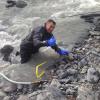Security Issue - Posting Photos From GPS Enabled Devices
-
Similar Content
-
- 45 replies
- 8,813 views
-
- 12 replies
- 1,066 views
-
- 15 replies
- 940 views
-
- 2 replies
- 1,077 views
-
New Member Limited Account And A Full Access / Full Member Account Implemented 1 2 3 4
By Steve Herschbach,
- 34 replies
- 8,701 views
-
- 1 reply
- 27,609 views
-
-







Recommended Posts
Create an account or sign in to comment
You need to be a member in order to leave a comment
Create an account
Sign up for a new account in our community. It's easy!
Register a new accountSign in
Already have an account? Sign in here.
Sign In Now